- Deutschland
- See & Do

Malay Heritage Centre in Singapore
The Malay Heritage Centre is a must-visit if you’re keen on learning about the rich heritage and culture of Singapore’s Malay community.
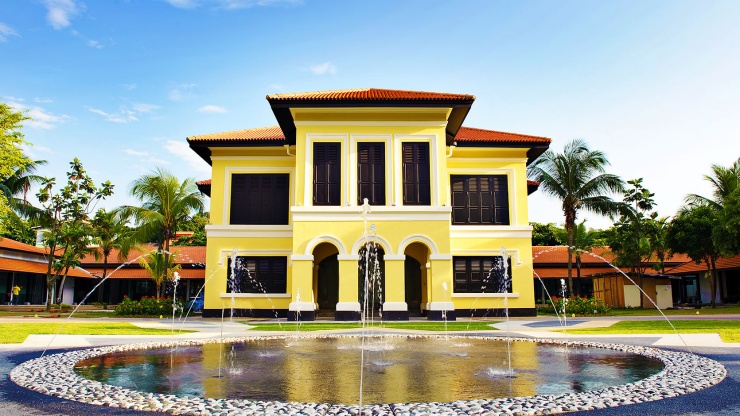
Learn more about Kampong Gelam as a thriving port town before 1819.
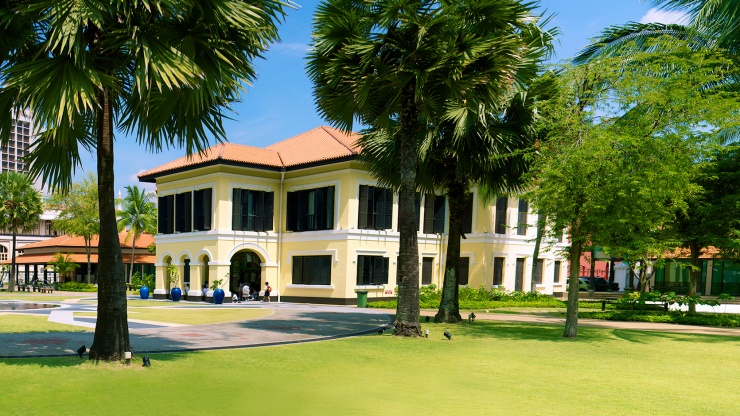
Delve into the rich heritage and culture of Singapore’s Malay community.
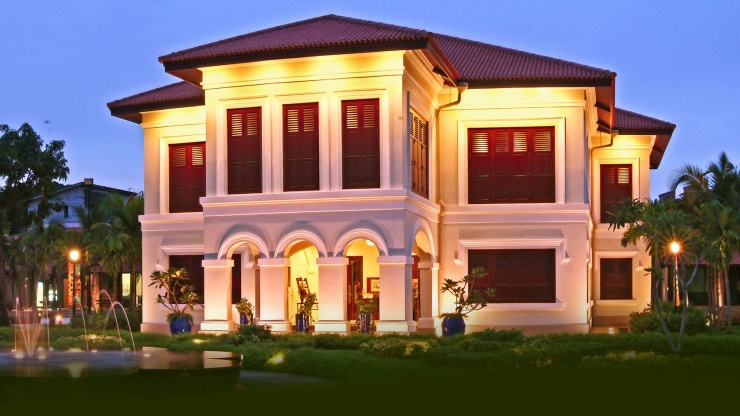
The museum’s rich collection includes interactive multimedia exhibits and community contributions.
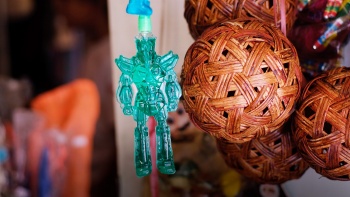
Tiny Red Dot, Mega Adventures
Singapore Malay Heritage Tours
- Locations Central City Area
- Trip Duration 1 Day(s)
- Trip Type CULTURAL , EXHIBITIONS
- Activities Culture , History Learning , Photography , Sight Seeing
- Group Size No Size Limit
- Trip Outline
- Trip Includes
- Trip Excludes
The Malay Heritage Centre incorporates a museum and cultural centre to portray the historical and socio-cultural growth of the Singapore Malays as well as to showcase the achievements and contributions towards the development of the nation. Explore the Malay Heritage Centre at your own time and pace and learn about the rich Malay culture in Singapore. A wonderful cultural exposure and learning opportunities for visitors of all ages and interests.
Itineraries
Malay heritage centre, time : 10:00 am, exhibitions, time : 2:00 pm.
- 1 Admission Ticket
- Guided Tour
- Transport home/ back to hotel
- Other personal expenses
- Other non-listed items

No Details Found
Related Trips

Singapore Indian Heritage Tours

Cultural Walking Tour of Little India

Singapore Chinese Heritage Tours
Malay Heritage Centre

Most Recent: Reviews ordered by most recent publish date in descending order.
Detailed Reviews: Reviews ordered by recency and descriptiveness of user-identified themes such as waiting time, length of visit, general tips, and location information.
Also popular with travellers
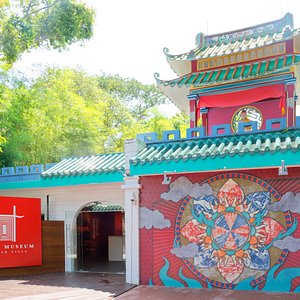
MALAY HERITAGE CENTRE: All You Need to Know BEFORE You Go (with Photos)
- Singapore Private Food and Culture Tour (From S$213.81)
- Private Singapore City Highlights Tour By Car - Half Day or Full Day (From S$515.19)
- Half Day or Full Day Private Custom Walking Tour of Singapore (From S$295.77)
- Breezing Singapore Bike Tour (From S$243.19)
- Private Customised Singapore Airport Layover Tour By Car (From S$515.19)
- (0.10 km) CUBE - Boutique Capsule Hotel @ Kampong Glam
- (0.16 km) Rest Bugis Hotel
- (0.20 km) The POD Boutique Capsule Hotel
- (0.15 km) The Sultan
- (0.19 km) RedDoorz Hostel @ Beach Road
- (0.03 km) Rumah Makan Minang
- (0.03 km) Maison Ikkoku
- (0.03 km) Box n Sticks
- (0.04 km) Permata Singapore
- (0.04 km) Rich and Good Cake Shop
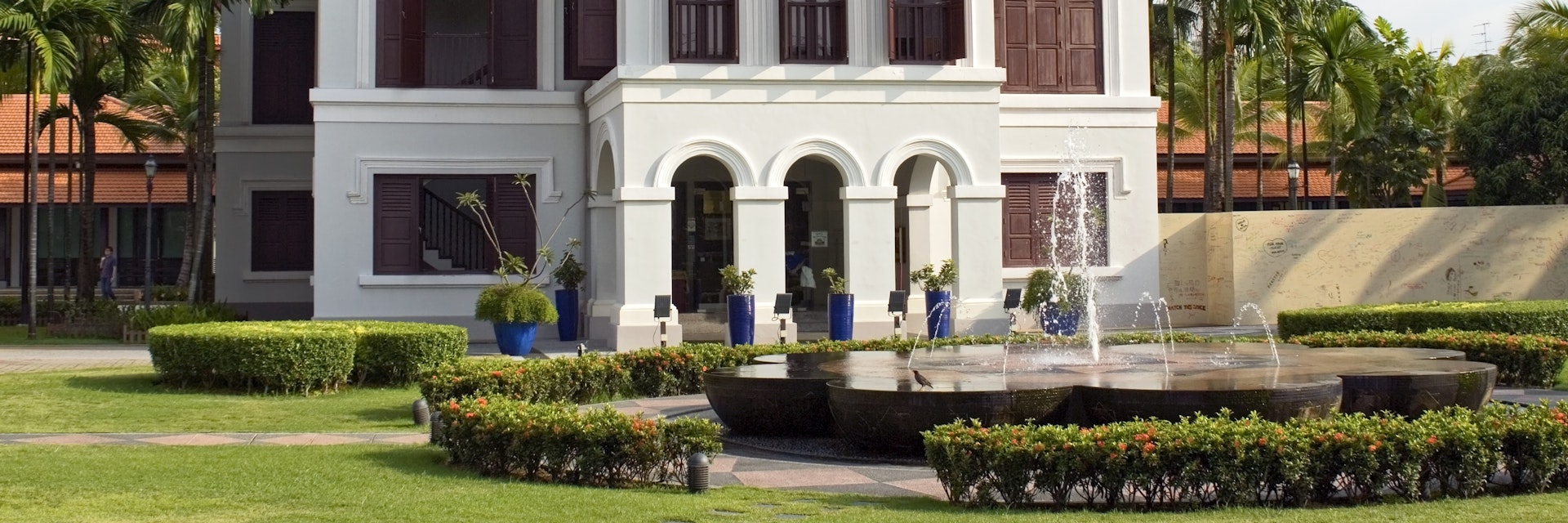
LightRocket via Getty Images
Malay Heritage Centre
Little India & Kampong Glam
The Kampong Glam area is the historic seat of Malay royalty, resident here before the arrival of Raffles, and the istana (palace) on this site was built for the last sultan of Singapore, Ali Iskandar Shah, between 1836 and 1843. It's now a museum, its galleries exploring Malay-Singaporean culture and history, from the early migration of traders to Kampong Glam to the development of Malay-Singaporean film, theatre, music and publishing.
Free guided tours run at 11am Tue-Fri and at 2pm Tuesday, Thursday and Saturday.
85 Sultan Gate
Get In Touch
https://www.malayheritage.org.sg/
Lonely Planet's must-see attractions

Take a tour through the Battlebox Museum, the former command post of the British during WWII, and get lost in the eerie and deathly quiet 26-room…

Singapore Zoo
The line between zoo and botanic oasis blurs at this pulse-slowing sweep of spacious, naturalistic enclosures and interactive attractions. Get up close to…

Gardens by the Bay
Singapore's 21st-century botanical garden is a S$1 billion, 101-hectare fantasy land of space-age biodomes, high-tech Supertrees and whimsical sculptures…

National Gallery Singapore
Connected by a striking aluminium and glass canopy, Singapore's historic City Hall and Old Supreme Court buildings now form the city's breathtaking…

Singapore Botanic Gardens
Singapore's 74-hectare botanic wonderland is a Unesco World Heritage Site and one of the city's most arresting attractions. Established in 1860, it's a…
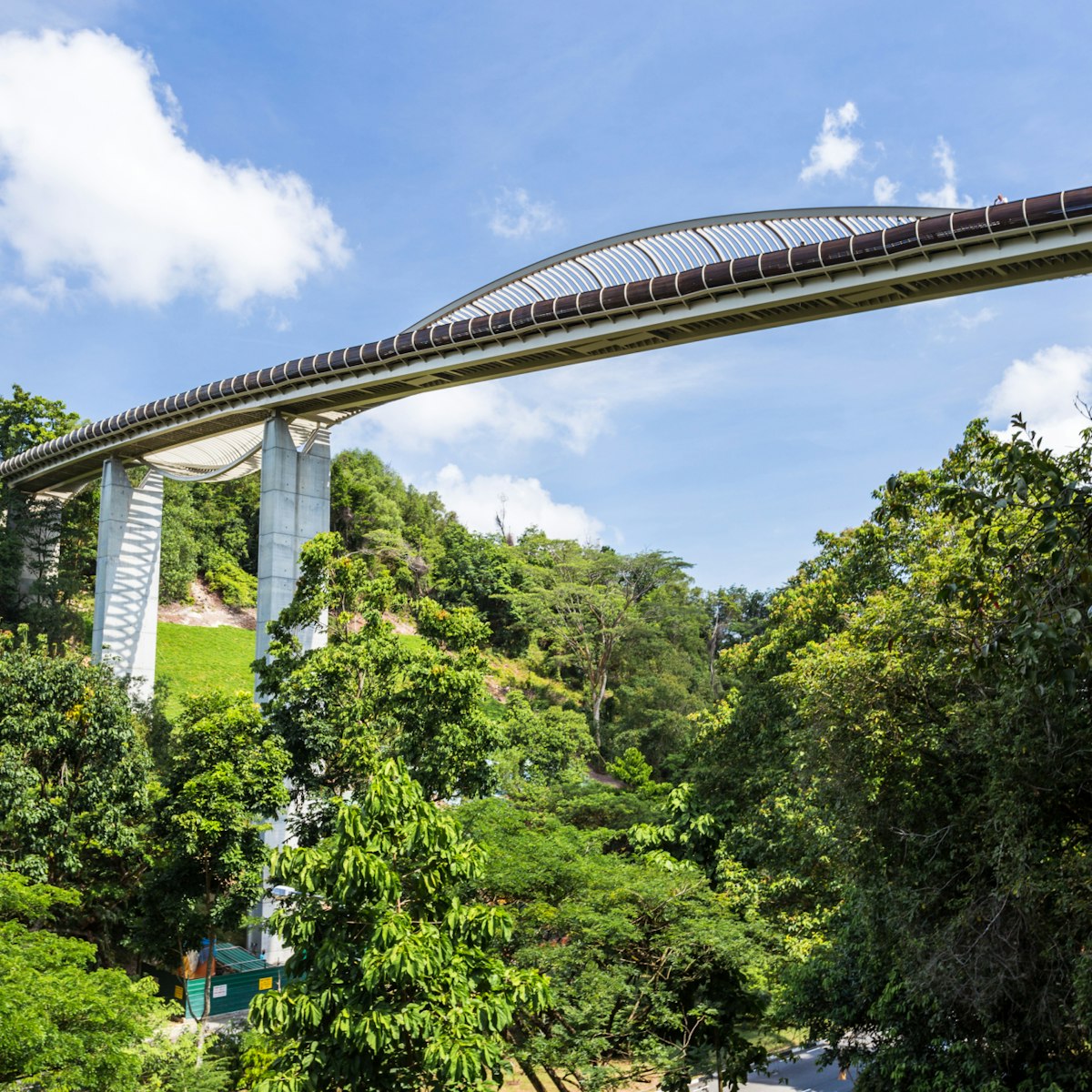
Southern Ridges
Made up of a series of parks and hills connecting Kent Ridge Park to Mt Faber and the Labrador Nature Reserve, the Southern Ridges will have you trekking…

MacRitchie Reservoir
MacRitchie Reservoir makes for a calming, evocative jungle escape. Walking trails skirt the water's edge and snake through the mature secondary rainforest…

Baba House is one of Singapore's best-preserved Peranakan heritage homes. Built in the 1890s, this beautiful blue three-storey building was donated to the…
Nearby Little India & Kampong Glam attractions
1 . Sultan Mosque
Seemingly pulled from the pages of the Arabian Nights, Singapore's largest mosque is nothing short of enchanting, designed in the Saracenic style and…
2 . Malabar Muslim Jama-ath Mosque
Architecture goes easy-wipe at the golden-domed Malabar Muslim Jama-ath Mosque, a curious creation clad entirely in striking blue geometric tiles. This is…
3 . Hajjah Fatimah Mosque
Singapore's 'Leaning Tower of Pisa' is the minaret at this curious mosque, sloping about six degrees off-centre due to the sandy soil on which the…
4 . Parkview Museum
This cavernous 1500-sq-metre contemporary art museum was opened in 2017 by the Parkview Group, owners of the iconic art deco building Parkview Square in…
5 . Parkview Square
In tribute to the fictional city from the Batman series, this edifice is often referred to as the 'Gotham Building' due to its art deco architecture. The…
6 . Abdul Gafoor Mosque
Completed in 1910, the Abdul Gafoor Mosque serves up a storybook fusion of Moorish, South Indian and Victorian architectural styles. Look out for the…
7 . Kwan Im Thong Hood Cho Temple
Awash with the frenetic click of chien tung (Chinese fortune sticks), this is one of Singapore's busiest (and according to devotees, luckiest) temples. It…
8 . Sri Krishnan Temple
The polychromatic Hindu Sri Krishnan Temple has a magnificent silver-and-gold shrine.
Malay Heritage Centre
- Galleries & Museums
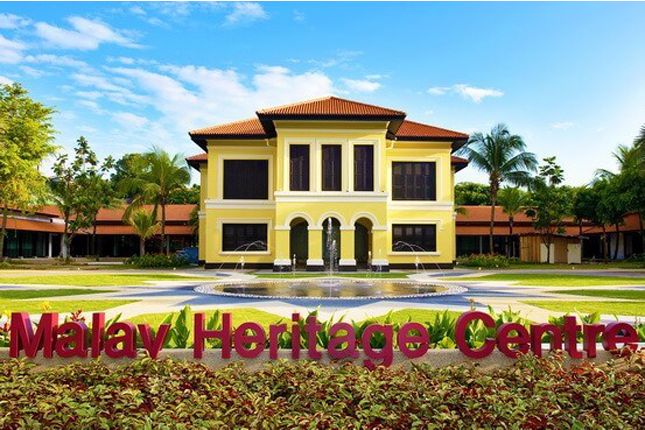
85 Sultan Gate, Singapore 198501
Officially opened by Prime Minister Lee Hsien Loong in June 2005, the Malay Heritage Centre (MHC) provides wonderful cultural exposure and learning opportunities for visitors of all ages and interests.
Situated amidst the Istana Kampong Gelam, Gedung Kuning and the surrounding Kampong Gelam precinct, the Centre acts as a vital heritage institution for the Malay community in Singapore.
Through its exhibits, programmes and activities, the Centre hopes to honour the past while providing a means for present-day expression.
The Malay Heritage Centre is presently under the management of the National Heritage Board in partnership with the Malay Heritage Foundation.
Visit Malay Heritage Centre's website for more information.
You May Also Like
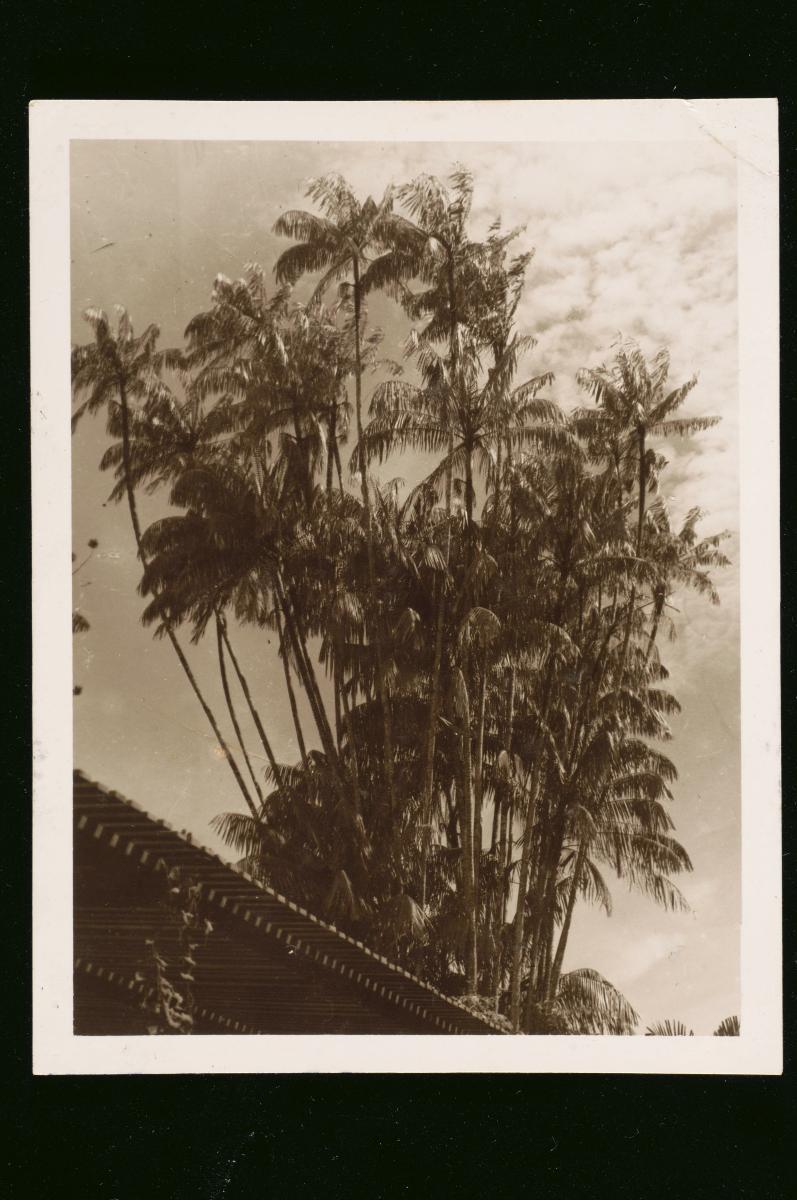
Coconut trees
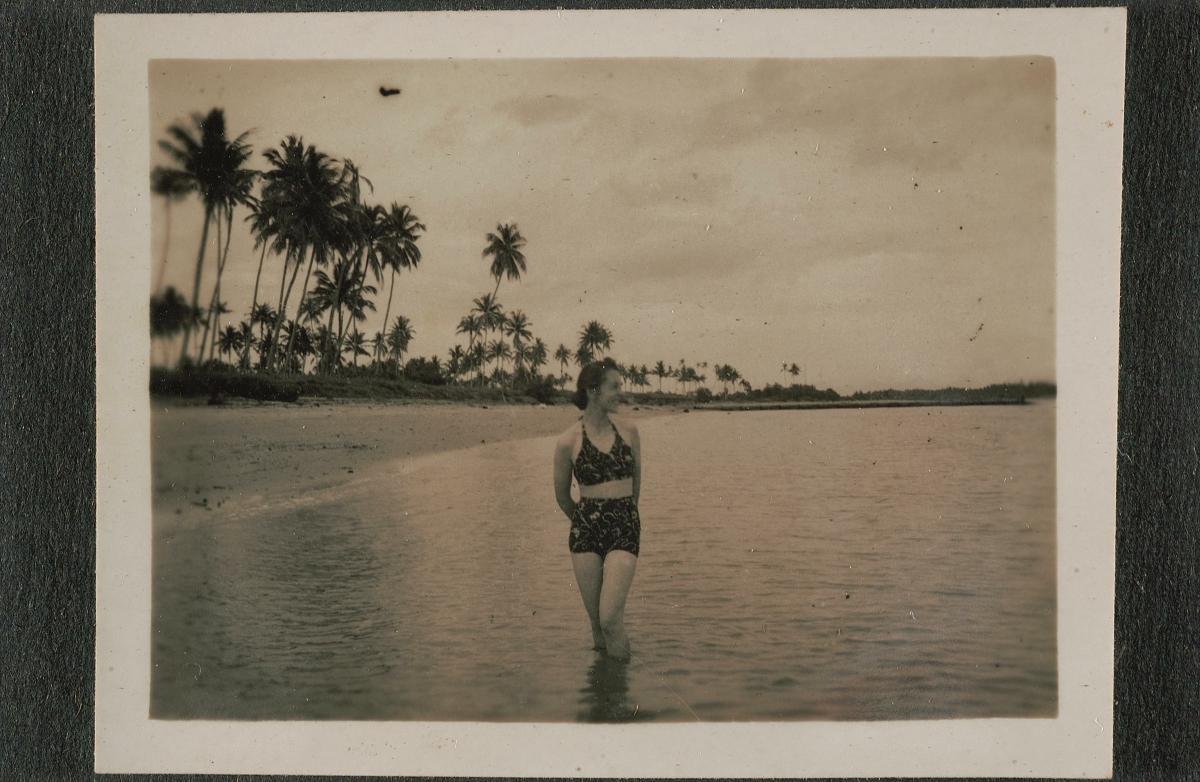
Wife of a British policeman who was posted to Singapore during the Malayan Emergency
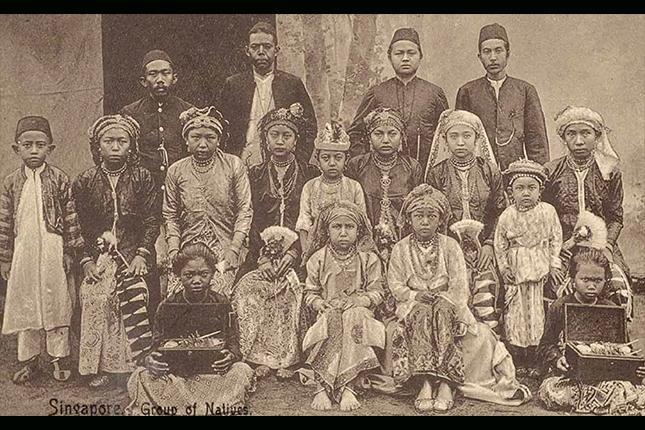
Laaobe - Changing Times: Baweanese Heritage and Culture in Singapore
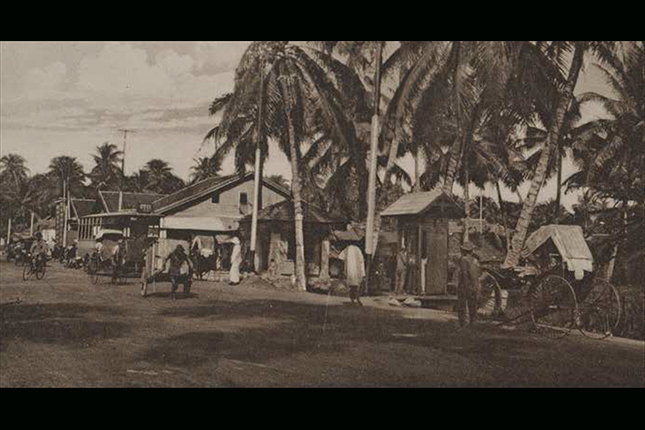
Geylang Serai: Community Heritage Trail
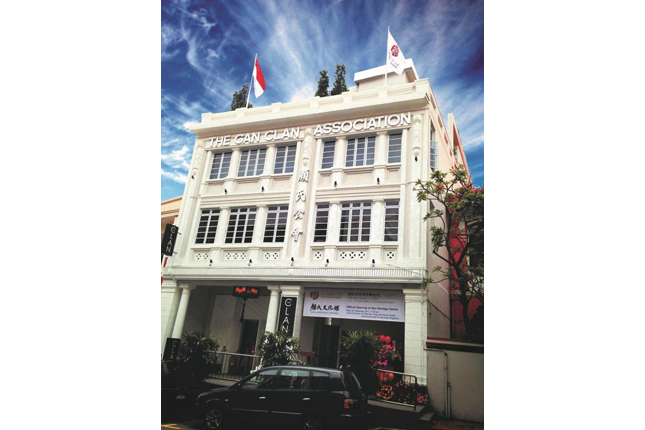
Gan Heritage Centre
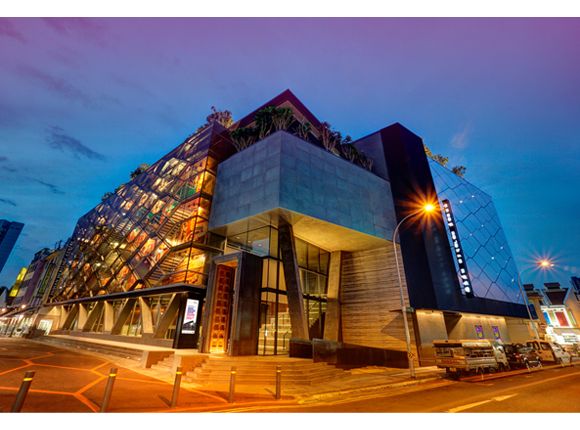
Indian Heritage Centre
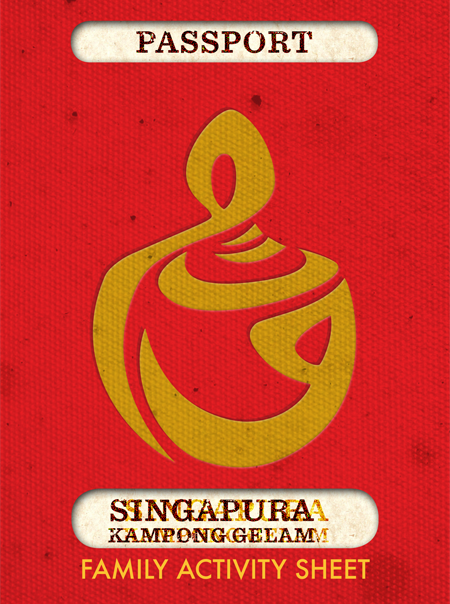
Malay Heritage Centre Family Activity Sheet
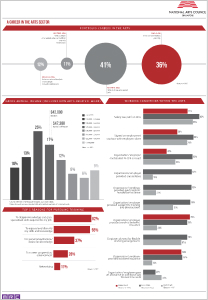
Arts and Culture Employment Study 2016

The Lives of Farrer Park: Capturing Moments and memories from the Golden Age of Singapore Sport
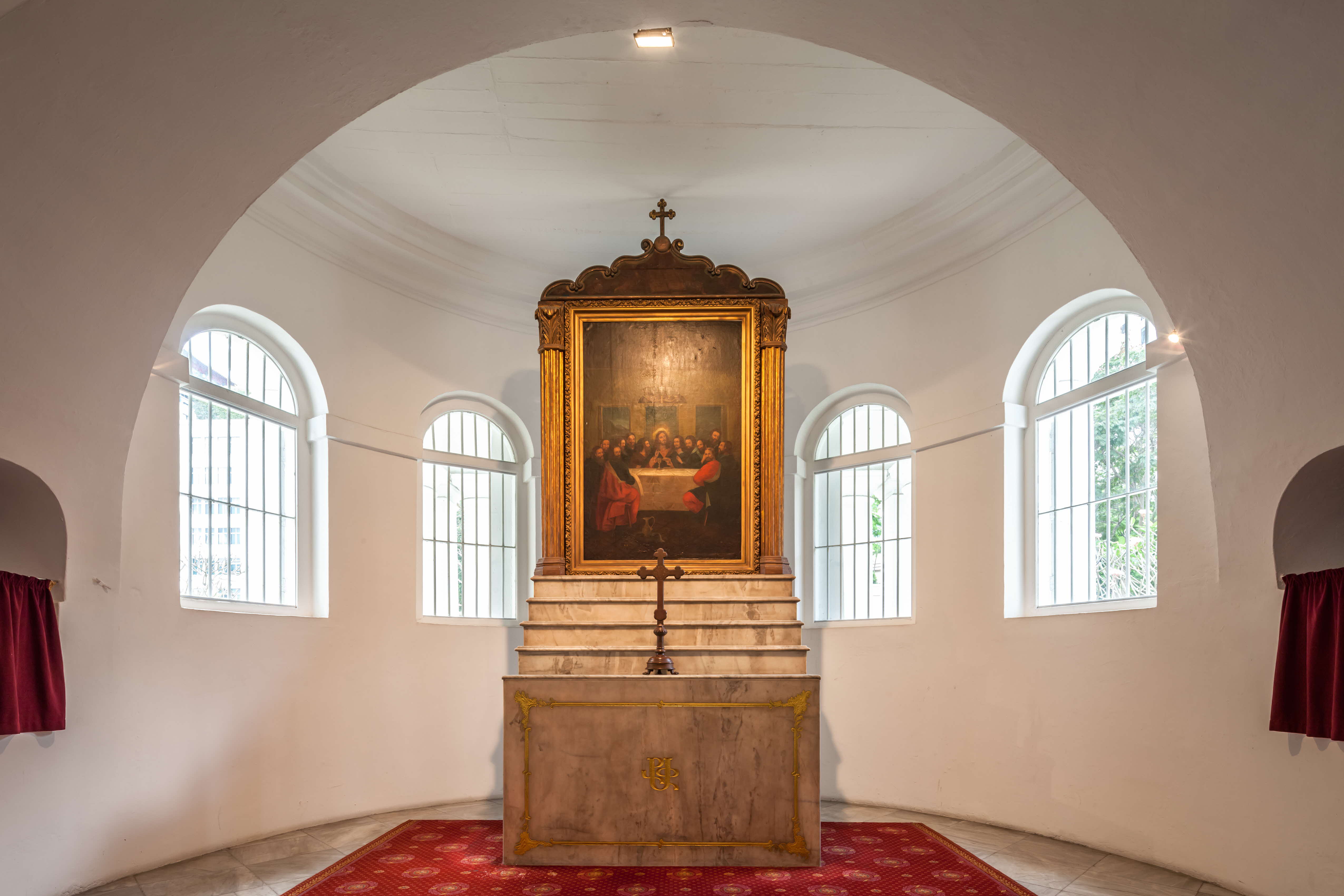
Armenian Church 3D Flythrough
The Malay Heritage Foundation
- +65 6299 5503
- [email protected]

Heritage Markers and Walking Tours

Project Overview
Cerita-Cerita Kampong Gelam (Stories of Kampong Gelam) comprises 14 new heritage markers that have been strategically placed in and around the precinct of Kampong Gelam. To value-add to the place making efforts of the precinct, each marker tells a unique story and social memories associated with the place. Most of these stories are ‘untold stories’ or not usually found in any of the history books, but are unique to Kampong Gelam. They have been gathered through intensive research, oral interviews, talks with former residents, and also current visitors to the area.
These heritage markers help to ‘bring to life’ the heritage and legacy of the precinct, up close and personal to the visitors. It also serves as a unifying identity that provides a sense of welcome to the place. Through the stories, quotes featured in the markers, visitors to the precinct will be made more aware of the significance of this historic district and its role in Singapore’s development as a global maritime hub. For instance, many, including locals, may not be aware that Kampong Gelam was one of the earliest port towns which had pre-existed even before the arrival of Raffles in Singapore. As a port town, it has attracted people from other parts of the Malay world, as well as China, India, Middle East and the other European powers (Portuguese, Dutch) to trade and set up their business here.
Through the stories featured in each heritage marker, we hope to:
- Facilitate greater awareness and understanding of Singapore’s rich and diverse multicultural heritage to support national integration and community bonding efforts at the national level (i.e cohesive society);
- Expose and educate locals, PRs, new citizens, expatriates and tourists on the integration of the different ethnicities of Kampong Gelam residents in social and commercial activities that contributed to the progressive Singapore that we see today and;
- Promote and safeguard the stories and social history of Kampong Gelam precinct to inspire present and future generations of Singaporeans.
Together with the heritage markers installed by the National Heritage Board (NHB) in 2012, these heritage markers will present a more comprehensive narrative on the legacy of this historic precinct.
Content and Stories Featured in the Markers
The final content and stories featured in the markers are the result of an extensive community engagement process which spanned over almost two (2) years. It started in July 2017 where members of the public were invited to pen their stories and memories associated with Kampong Gelam on storyboards. More than 300 stories were collected through this engagement process. These were then collated and then grouped according to some broad themes, and then matched with the relevant historical findings from the research. Relevant stories and the historical information were then shortlisted and tested out during walking conversations to find out, which design idea would best help to ‘brand’ and represent Kampong Gelam and which stories would resonate better with potential visitors participating in a guided tour of the heritage trail. Several workshops were also conducted to further curate and shortlist the design concepts and the stories to be featured. After more than 18 months, and intensive consultation with URA with regards to the direction for design of signages and markers to identity precinct, the project team finally decided on the final design aesthetics for the marker.
Design Rationale for the Heritage Markers
The heritage marker is made from metal that has been given a bronze colour. This is to pay tribute to the many foundries, blacksmith shops and coppersmith shops that used to be found in Kampong Gelam. These businesses, owned by Javanese, Hokkiens and the Teochew craftsmen, were located along Sultan Gate, Pahang Street and lower half of Bussorah Street (which used to be known as Kampong Tembaga or Copper Village).
The text, archival photos and maps will be held within a framed border at the top and bottom of the marker. The border design is formed by juxtapositioning the architectural elements and features of buildings in Kampong Gelam – such as the geometric design of the minaret of Sultan Mosque and the air ventilation vents of the shophouses found within the precinct. The over 600 shophouses in Kampong Gelam used to be owned by merchants and traders from many nationalities. As a result, Kampong Gelam had been home to many communities from the Malay Archipelago, India, Middle East, China and even Europe. Placing these elements side by side, creates a synergy that complements each other, and reflects the diverse communities that has pre-existed in Kampong Gelam living in harmony as a cohesive society for many generations.
All the design elements are given a golden outline to accentuate some of the aesthetics and features to pay tribute to the fact that the area was once part of a royal citadel or kota raja. The motif at the top centre of the marker has also been uniquely designed to be sensitive to the nuances of Malay art, customs and tradition. It is made of four (4) elements – the butterfly, the ‘itik sekawan’ motif, the colours and the typeface.

The butterfly (rama-rama)
The initials of Kampong Gelam; letters K and G; was stylised to resemble the butterfly wings. The butterfly becomes the icon or the messenger of the stories and plays an important role in bringing the visual identity together.
In Malay culture it is believed that when a butterfly flies into someone’s house, it is a sign that there will be guests / friends / relatives from far visiting with good news in the near future. Incorporating this into the logo design and branding connotes a metaphorical welcome to visitors from all over the world to Kampong Gelam.
The butterfly also symbolises prosperity, harmony and ever-evolving which suits Kampong Gelam area perfectly as it is a place where people from different parts of the world come and settle down. Through the years, the diverse communities and their businesses helped to make Kampong Gelam as one of the prominent commercial sites of its time. Today, they have left their mark in different ways, from the buildings in the area and long-time businesses to vernacular place names. Even in the fast-changing environment, Kampong Gelam managed to retain its charm and vibrancy that constantly attracts visitors from around the world like how it used to be due to the spirit of the people that make up the community.
The ‘Itik Sekawan’ motif
The motif is widely used in traditional Malay crafts such as weaving, wood carving, metal works etc. It depicts the behaviour of the duck that always walk together in line. This quality became a lesson for the people about the meaning of life where everybody walk together hand in hand in harmony. By incorporating the motif into the identity, it strongly resonates about the diverse groups of people who used to live at Kampong Gelam in a peaceful manner. This way of life continues until today with the various businesses thriving alongside each other as the living testament.
A duo-tone colour combination was chosen to retain the simplicity. Copper / bronze is used as the primary colour as copper / bronze material was traditionally used in everyday household items in a Malay house as well as to signify the many blacksmiths that once called Sultan Gate home. It is also considered a colour of the Royalty / Sultan, who once resided at the palace that is now known as Malay Heritage Centre.
Referencing the Jawi typography, the shape of the letters K and G was stylised to emulate the curvy forms of ‘kaf ’ and ‘gaf ’. The dot of the ‘gaf ’ was also incorporated into the brandmark to give a finishing touch to the identity. This approach also pays tribute to the legacy of Kampong Gelam that used to be the printing and publishing hub, as well as the creative and intellectual heart for the Malay world.
Appreciation
This project was made possible through the support from the Heritage Project Grant (NHB) as well as from various partners and stakeholders. Our greatest appreciation goes to;
AlAttas Group Breezeway Development Estate of Haji Yusoff Mohamed Noor Faizah Jamal Former residents of Kampong Kaji (Bussorah Street) Friends of the Museum Gerry Ball Dr Imran Tajudeen Kampong Gelam Alliance Task Force Khir Johari Lure Heaven Mallal & Namazie Hjh Maimunah Restaurant Muhammad Zaki Maarof One Kampong Gelam Santa United International Holdings Singapore Tourism Board Singapore Land Authority The Sultan Urban Redevelopment Authority Warees Investment Pte Ltd Zubir Abdullah
Kampong Gelam Walking Tours

You can do your own self-guided tour and discover these markers in your own time. Or you can choose to experience the rich history and culture of this historic precinct through a guided tour. Our experienced docents will guide you to explore these trails and experience these stories behind the streets, shophouses and landmarks of Kampong Gelam.
This is part of the bi-monthly guided tours conducted by volunteer docents from the Friends of the Museum, in collaboration with MHF. Each walking tour lasts about 90 minutes. Limited places are available and terms and conditions will apply.
Admission is Free. Tours are reserved on a first come first served basis. Register for the Kampong Gelam Heritage Walking Tour here .

Ostrich Trails
Because it is a walking bird and walking is what we do.
Kampong Glam Walking Trail
Home » Asia » Singapore » Kampong Glam Walking Trail
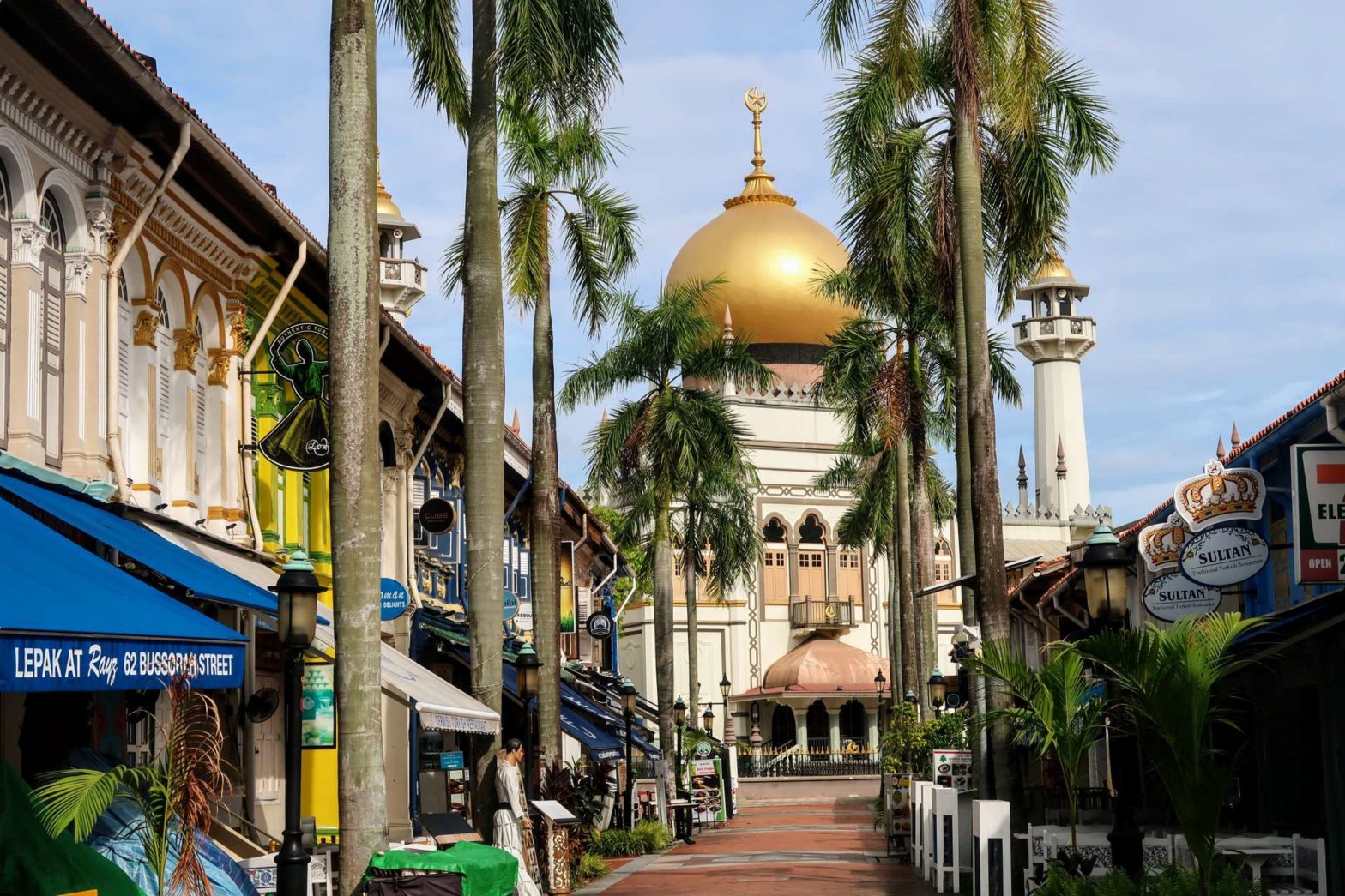
By Vicky · Published Nov. 7th, 2021 · Updated Mar. 31st, 2023
When you buy through links highlighted with an asterisk (*) on this site, we may earn a small affiliate commission at no cost to you.
On this Kampong Glam walking trail, explore one of the coolest neighbourhoods in town, with culture, nightlife, delicious food and Malay heritage.
Page Contents:
How to get to Kampong Glam
Kampong Glam area is on the northeast side of the city centre. It’s a short walk from the nearest MRT, Bugis MRT station on the Green Central Line, or easy access from the many buses that travel along the surrounding main roads – Victoria Road, Beach Road or Rochor and Ophir Road.
Kampong Glam from Bugis MRT
To get to Kampong Glam from Bugis MRT, head for exit E. At the top of the escalator, turn right (NE) along Victoria Street. Continue for a few hundred metres, then turn right down Arab Street and start the Kampong Glam walking trail.
Kampong Glam Walking Tour Map
Get the route by downloading the .gpx or .kml file below. For navigation with Maps.me on your mobile phone, simply download the .kml file and open to add it to the Maps.me bookmarks.
Tips for Kampong Glam Walking Trail
- The Malay Heritage Museum is open 10 – 6 every day except closed on Mondays.
- To shorten the route, you can end at the Malay Heritage Museum.
- For an extension, head to Little India , a few minutes walk away.
- Early mornings are a great time to walk this trail in Kampong Glam because of the cool air.
- Evenings are another good time to walk this trail as Bali and Haji Street come alive, and coloured lights brighten up the mosque.
Attractions on the Kampong Glam Walking Trail
On this walking trail through Kampong Glam, you’ll see the main sites and attractions of Kampong Glam:
- Sultan Mosque
- Bussorah Street
- Arab Street
- Bali & Haji Lane
- Malay Heritage Centre
- Malabar Mosque
- Church of our Lady of Lourdes
This is a free, self-guided walking tour. If you prefer to join a guided tour of Kampong Glam, there are some great walking tours on Klook *.
When was Kampong Glam founded?
The area of Kampong Glam was assigned to Sultan Hussein and his family by Sir Stamford Raffles in 1819. Kampong Glam grew up as a port town, attracting traders from the many islands of Indonesia, Malaysia and elsewhere. In the two centuries since Kampong Glam was founded, land reclamation means this historic district is no longer on the edge of the ocean. Beach Road, on the southern edge of Kampong Glam, is now roughly 3 km from the ocean.
Directions: From Arab Street, head left (east) on North Bridge Road to admire the back of the Sultan Mosque.
As you stroll along North Bridge Road, you’ll see the back of the gold-domed Sultan Mosque reaching into the sky.
Apart from views of the mosque, you see that North Bridge Road is full of good-value local eateries. These sell mainly halal Indonesian and Indian-Muslim food, such as Nasi Padang and Murtabaks ( glossary ↓ ).
Directions: Head right (south) on Kandahar Street and right again through the obvious arch onto Muscat Street and to Sultan Mosque.
1. Sultan Mosque
Key Information: Open for self-guided visits 10AM-12PM, 2PM-4PM Sat-Thu. Fri closed. Follow dress code or get one of the robes available at the mosque counter on first come first serve basis, see the website .
Sultan Mosque, or Masjid Sultan, dominates the centre of Kampong Glam conservation area and is a highlight of this walking trail. This large mosque is very picturesque, and the most famous tourist attraction of Kampong Glam.
You can visit parts of the mosque on self guided tours, or peak into the mosque from the front just below the large golden dome. You’ll see the beautifully decorated inside, coloured mainly green with Arabic script flowing around the room.
Why was Sultan Mosque built?
In 1823, Sultan Hussein, who lived nearby in the Istana (palace) Kampong Glam, wanted a mosque he could easily visit. A simple mosque was built in the following years. Sultan Hussein’s grandson donated more land to the mosque, and eventually in 1924, a new mosque was built to replace the old one.
This building from 1924 forms the core part of the mosque you see today, and extensions in the same style were added much later in 1993. Interestingly, one of the mosque’s minarets was used as an observation post during the Second World War to watch for aircraft.
Who was Sultan Hussein?
Sultan Hussein originally ruled in Riau, the part of Indonesia opposite Singapore, west across the Malacca Straits. He was also involved in a successional dispute over the Sultanate of Johor. He won this dispute when Sir Stamford Raffles agreed to recognise him as the legitimate Sultan in return for allowing the British to set up a trading post in Singapore. They signed a treaty in 1819 which is seen as the founding of modern Singapore.
Sultan Hussein built his Istana, or palace, in Kampong Glam, which became a centre for Malay and Muslim communities.
Directions: From directly in front of Sultan Mosque, head south down Bussorah Street.
2. Bussorah Street
In front of Sultan Mosque lies Bussorah Street. This street is lined by beautifully restored, colourful shophouses and palm trees. It’s pedestrianised and full of lights, delicious smells and people during the evenings. In the early mornings it’s much quieter and you more easily admire the architecture and views of the mosque.
Bussorah Street is a great place to eat Middle Eastern food and there are many atmospheric Turkish restaurants. Restaurant touts will try and tempt you in. They serve good food in a nice setting, though prices can be higher than you might find elsewhere and it can be full of tourists.
As you walk down the road, remember to keep looking back to see the Mosque framed elegantly by the tall palm trees. Bussorah Street used to be called Sultan Road but was renamed in 1910 after Basra, a city in Southern Iraq. Other streets in the area also take their names from places in the Middle East.
Bussorah Street used to be an assembly and organisational point for pilgrims wanting to visit Mecca. Pious pilgrims gave advice to others and sold basic supplies, such as blankets, food and money belts, which pilgrims would need on their journeys. In 1975, with the development of commercial air travel, pilgrims ceased to flock to Bussorah Street.
Directions: When Bussorah Street meets Baghdad Street, at the end of the pedestrianised area, turn right until Arab Street and head right (north) or detour a while on the southern section of Arab Street.
3. Arab Street
Arab Street used to be a bustling centre of the materials and textiles trade in Singapore. Today it is quieter and has lost some of its atmosphere, though you can still see evidence of the importance of textiles to this street today. Many quaint little stalls sell rugs and fabric for saris and other clothing. It’s still the place to visit to get high-quality Persian rugs or prayer mats.
Several other shops are still run by descendants of early Arab traders to the region. They sell honey, dates, frankincense and myrrh, and other goods imported from the Middle East.
Arab Street got its name in 1822, after the grand Singapore town plan designated this area for the Arab community. Before this, it was called Jawa Koi (Java Street) after the origin of the inhabitants who lived here.
Directions: Continue up Arab Street until North Bridge Road and head left (west) before turning left (south) again down Bali Lane.
4. Bali and Haji Lanes
Bali and Haji Lanes are narrow, insta-worthy streets full of bold street art and walls covered with imaginative graffiti. Many of the artsy murals on the walls have a Mexican theme, and for some reason many of the eateries are also Mexican.
Bali and Haji Lanes really come alive in the evenings when bands sometimes play and people sit outside to drink beer/wine/cocktails and eat the mostly Mexican Food. Happy hour is every day and lasts until 8 pm at most places. You can get two glasses of wine for $16, or a pint of beer for $10.
Directions: Cut to Haji Lane from Bali Lane, passing through the Blu Jaz Cafe (a great place to visit in the evenings, website , Tripadvisor Reviews *). At the first intersection, turn right to see the most interesting part of Bali Lane.
Bali and Haji Lanes are surprisingly quiet in the mornings when the restaurants and bars aren’t open. This makes it a great time to take photos of the street art. However, in the evenings, bright lights enhance some of the artwork, so come back again then!
How did Bali and Haji Lanes get their names?
Bali Lane got its name from the origin of the population who used to live on this street. The inhabitants mainly came from Java, many of whom were from Bali. Bali Lane and the immediate surroundings were originally known as Kampong Bali, or Bali Village.
Haji Lane, on the other hand, was named after the title awarded to Muslim Pilgrims who had completed the hajj, or pilgrimage to Mecca. Males who complete the pilgrimage are known as Haji, while females are called Hajah. Since the Sultan Mosque and surrounding streets were centres for organizing travel to Mecca, many Malay and Muslim residents who had completed the Hajj lived on this street.
Directions: At the bottom of Haji Lane, head left (east) on Beach Road. Pass Arab Street and take the next left up Bussorah Street (north). At the intersection with Baghdad Street, turn right (east) and then left up Kandahar Street, which leads to the Malay Heritage Centre.
As you walk along Kandahar Street, watch out for the nice shophouses, some of the most decorative in Kampong Glam.
Opposite the Malay Heritage Centre, on the corner of Muscat and Kandahar Streets, we had a break for teh tarik and snacks at the cafe/restaurant with the red awning, Rumah Makan Minang ( Website , TripAdvisor Reviews *). They serve halal Indonesian dishes and some smaller sweet treats. The cafe has a nice outdoor seating space with great views of Sultan Mosque, the food is tasty and the prices were not high.
5. Malay Heritage Centre
Key Information: Currently closed for revamp works. Normally open 10am-6pm every day except Mondays. Free for Citizens and Permanent Residents. $8 for adults otherwise, with reductions for students, seniors and children. Buy reduced-price tickets here *. Plan to spend an hour or two in the Malay Heritage Museum.
The Malay Heritage Centre ( Website , Tripadvisor Reviews *) is located in Istana Kampong Glam, or the Sultan’s Palace, where the Malay Royalty lived. Sultan Hussein built the original wooden istana, or palace, in 1819. His son rebuilt it in 1840. In 2005, the government converted Istana Kampong Glam into the Malay Heritage Centre. This centre now houses a museum that focuses on the old Malay way of life and how it has changed as Singapore developed as a centre of trade. It also looks at culture such as theatre, opera, tv and music, and highlights famous Malay Singaporeans.
When you enter the museum, you’ll receive a Kampong Glam Heritage Trail booklet. It goes into a lot of detail about attractions and things to in Kampong Glam. It would take a long time to read through, perhaps after your visit or over a long lunch.
Explore Malay Heritage in Kampong Glam
- Visit the Malay Heritage Centre at Istana Kampong Glam.
- Make sure you see Sultan Mosque, it’s hard to miss!
- Walk to the old Malay Cemetery near Malabar Mosque.
- Try Malay food such as Nasi Pedang ( glossary ↓ ).
The Malay Museum talks a lot about Nusantara, but it doesn’t explain what this means. Nusantara is an old Javanese word that means ‘outer islands’. Within Indonesia, it’s used to mean all the Indonesian islands, though elsewhere it means any land with Malay-related culture. This includes Indonesia, Malaysia, Singapore, Papua New Guinea, Brunei, East Timor, the Philippines and elsewhere.
After the museum, you can quickly walk around the herb garden in the grounds. Some examples of the herbs are growing very well, while others seem to be entirely dead and now their labels stand in front of bare soil.
Malaysian Movie: Princess of Mount Ledang
The movie Princess of Mount Ledang, or Puturi Gunung Ledang, is a Malaysian movie that is worthwhile to learn a bit about the history of this part of the world. We happened to watch it the night before visiting the Malay Heritage Centre and were surprised to find many places and characters mentioned in the movie also in this museum. These include Majapahit and the Sultan of Melakka. The quality and acting in the movie isn’t always the best, and sometimes it was slightly boring, but it gave a feel of the region so I was glad to have watched it anyway. We found it on Netflix.
Moving on from the Heritage Centre
Directions: Exit to the south from the Malay Heritage Centre, onto Sultan Gate Road, through the gates opposite the main entrance to the istana museum building.
Shortcut : If you are feeling tired already, this is a good place to stop. You can return to Bugis MRT or catch a bus from nearby.
On your right, you’ll see the Gedung Kuning (Yellow Mansion), which was used by Sultan Hussein’s grandson. Yellow is considered a royal colour in Malay tradition. It’s now a newly opened (mid-2021) restaurant, Permata ( Website , Tripadvisor Reviews *).
Directions: Continue along the road and take the first on the left (East) and then the first left again to walk up Aliwal Street.
Walking along Aliwal Street, you’ll see an art deco style white building on the right. This art deco building, built in 1938, formerly housed schools set up by the Chinese Hokkien community. It’s now the Aliwal Arts Centre. To the left you can see the Istana Kampong Glam and the Sultan Mosque behind it.
Directions: At the end of Aliwal Street you’ll hit the large Victoria Street. Across the road to the right, you should be able to see Malabar Mosque, which is the next stop.
6. Malabar Mosque
This mosque is a striking blue building, now on the corner at a busy road junction. Malabar Muslims are those from the Malabar Coast of southwest India. They built this Mosque between 1956 and 1963. Many of the Malabar Muslims migrated to Singapore in the nineteenth and early twentieth centuries.
Directions: From the mosque head north on Jalan Sultan (one of the oldest streets in Singapore) towards Rochor River. Turn left just before the bridge to stroll along the river.
On your left, you’ll see small gravestones of the Old Malay Cemetery in the grass and amongst the trees. These cemeteries date from roughly the 1820s and used to be surrounded by mangroves.
The river, on the right, is not that scenic but at least there are no cars. This river used to be a centre of sawmills and wood trade, processing wood brought in from Malaysia and Indonesia.
Directions: 400 metres along the river, you’ll see the final stop, a cute church, the other side of the large bus terminal which has many buses going to Malaysia. You have to approach it from Ophir Road, on the far side.
7. Church of Our Lady of Lourdes
The Church of Our Lady of Lourdes was built in 1886-1888 by the Indian Catholic Community. The beautiful inside is worth seeing if it’s open, where you can sit on the benches and enjoy the peace and tranquillity. This church is the final stop on the Kampong Glam walking trail.
Directions: There’s a bus station at the front of the church, or Bugis MRT station is only a few hundred metres away. Cross over Ophir Road and Queen Street, then cut through the green field surrounded by cars and trees to Bugis MRT station.
Glossary of Useful Language Terms in Kampong Glam
- Haj – pilgimage to Mecca
- Haji/Hajah – a man/woman who has done the haj
- Istana – palace
- Jalan (abbreviated Jln) – road, or direction
- Kampong – village
- Nusantara – countries with Malay culture
- Pondok – communal lodging house
- Shophouse – narrow but deep terraced house typical of Singpoarean streets that have not been redeveloped
- Temmongong – prime minister of the sultans
- Wayang – theatre
- Nasi – rice
- Nasi Padang – the classic Sumatran meal of rice with other dishes, mainly cooked with coconut milk.
- Rendang – typical Indonesian beef stew
- Mee – noodles
- Kuih – cake
- Satay – kebabs
- Ketupat – rice dumplings in coconut leaves
- Biryani – an Indian rice dish
- Murtabaks – fried bread stuff with meat
Nearby Kampong Glam
Just southwest of Kampong Glam, across Ophir Road and not far from Bugis MRT, an imposing brass-coloured skyscraper immediately captures your notice. This is Parkview Square. Although built in 1999, it was constructed in an art-deco style. Housed in Parkview Square is the iconic Atlas Bar ( Website , Tripadvisor Reviews *). This is an opulent bar open 8 am – 1 am, also serving a delicious-looking afternoon tea.
Kampong Glam Walking Trail by Night
Kampong Glam area is a worthwhile place to visit in the evening. The street art of Bali and Haji Lanes comes alive and these lanes are full of people and often live bands. The evening means it’s cooler to walk and you enjoy an evening meal. Happy Hour at Bali/Haji Lanes normally ends at 8 pm in most restaurants.
Lights also shine onto Sultan Mosque and Bussorah Street in the evening, making for nice photos.
Guidebooks to Explore more of Singapore

To discover more heritage in Singapore, check out the nearby Little India Walking Tou r, explore hip Joo Chiat , check out historic Chinatown or buzzing Marina Bay . For more neighbourhood walks and hikes, check out our Singapore Guide .
FAQS: Kampong Glam Walking Trail
Kampong Glam, or sometimes Kampong Gelam, means village of Gelam trees. Kampong is the Malay word for village, and Gelam is a type of native tree, the Cajeput tree. Cajeput oil is used for medicinal purposes, including in Tiger Balm, and the wood of the Gelam tree can be used to make boats. There is a competing, and perhaps complementary theory on what Kapong Glam means. The Orang Gelam people lived nearby and perhaps the area was named after the original inhabitants.
Kampong Glam is known for Malay and Muslim culture which can be explored at the Malay Heritage Centre. The most famous landmark is the beautiful Sultan Mosque. Kampong Glam is also known for its Middle Eastern and Indonesian food, and its nightlife and bright street art on the narrow Baji and Haji Lanes.
1. B e awed by the beautiful Sultan Mosque 2. Eat Middle Eastern food on Bussorah Street 3. Shop for carpets and materials on Arab Street 4. Take photos on Bali & Haji Lane 5. Learn about the culture at the Malay Heritage Centre 6. Admire the stunning Malabar Mosque 7. See the historic Church of Our Lady of Lourdes
Related Posts
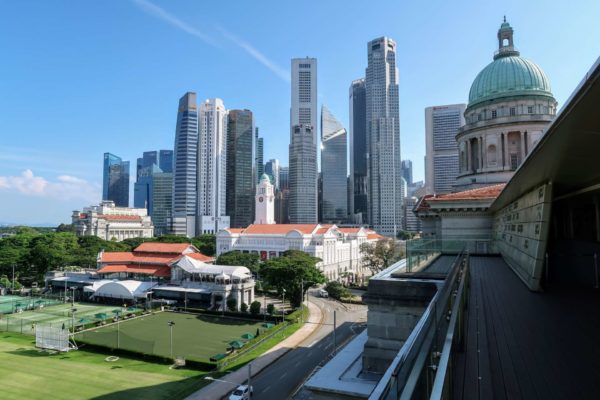
Colonial District Walking Trail
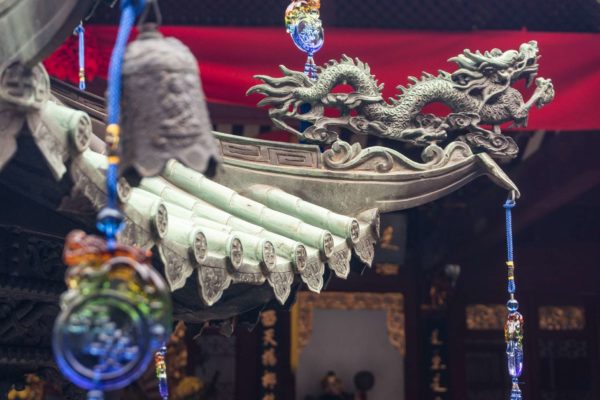
Chinatown Walking Trail
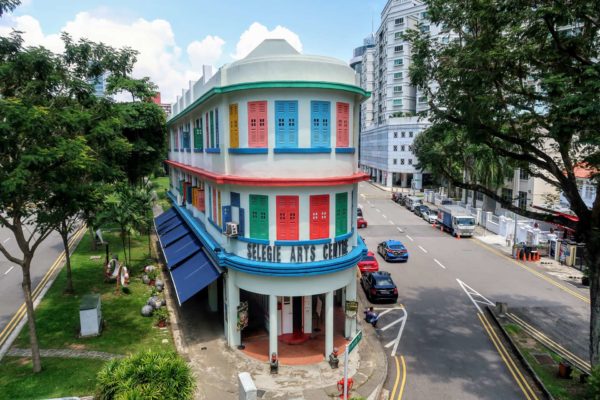
Bras Basah Walking Trail
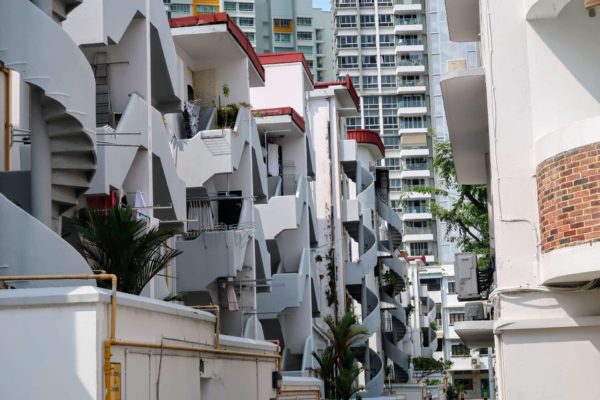
Tiong Bahru Walking Trail
Leave a comment cancel reply.
Your email address will not be published. Required fields are marked *
Government agencies communicate via .gov.sg websites (e.g. go.gov.sg/open). Trusted websites

THE MALAY HERITAGE CENTRE IS CURRENTLY CLOSED FOR REVAMP WORKS.
Look out for us in end-2025.
Although we are closed, we will continue to bring you programmes and travelling exhibitions around Singapore.
Find out more about the schedule and programme listing: What’s On
Sign up for our programmes! Peatix
Connect with us @malayheritage for more updates
Keep up to date with all our museums!

IMAGES
COMMENTS
The Malay Heritage Centre is an educational foundation and museum located in Kampong Gelam, Singapore provides visitors with a wealth of cultural insights. ... The Centre honours the original layout—your tour of the permanent galleries starts from the upper floor and ends at the ground level. Malay Heritage Centre in Singapore 85 Sultan Gate ...
From USD200.00. The Malay Heritage Centre incorporates a museum and cultural centre to portray the historical and socio-cultural growth of the Singapore Malays as well as to showcase the achievements and contributions towards the development of the nation. Explore the Malay Heritage Centre at your own time and pace and learn about the rich ...
Bras Basah.Bugis. Changi Chapel and Museum. Founder's Memorial. Indian Heritage Centre. National Museum of Singapore. NHB Festivals. Reflection at Bukit Chandu. Children's Museum Singapore. Sun Yat Sen Nanyang Memorial Hall.
Malay Heritage Centre hours of operation: 10am-6pm (Closed Mondays). Buy tickets in advance on Viator. If you book with Viator, you can cancel at least 24 hours before the start date of your tour for a full refund. Book tours and tickets to experience Malay Heritage Centre.
Malay Heritage Centre. 171 reviews. #148 of 1,191 things to do in Singapore. History Museums. Open now. 10:00 AM - 6:00 PM. Write a review. About. Officially re-opened by Prime Minister Lee Hsien Loong in September 2012, the Malay Heritage Centre (MHC) showcases the history, culture and contributions of the Malay community within the context of ...
Malay Heritage Centre. 171 reviews. #147 of 1,193 things to do in Singapore. History Museums. Open now. 10:00 AM - 6:00 PM. Write a review. About. Officially re-opened by Prime Minister Lee Hsien Loong in September 2012, the Malay Heritage Centre (MHC) showcases the history, culture and contributions of the Malay community within the context of ...
It's now a museum, its galleries exploring Malay-Singaporean culture and history, from the early migration of traders to Kampong Glam to the development of Malay-Singaporean film, theatre, music and publishing. Free guided tours run at 11am Tue-Fri and at 2pm Tuesday, Thursday and Saturday.
Malay Heritage Centre. / 1.30222°N 103.86028°E / 1.30222; 103.86028. The Malay Heritage Centre ( Malay: Taman Warisan Melayu; Jawi: تامن واريثن ملايو ) is a cultural centre and museum located at Sultan Gate off Beach Road in Kampong Glam, Singapore. It showcases the culture, heritage and history of Malay Singaporeans .
Opened in June 2005, the Malay Heritage Center is the perfect insight to the wonderful culture of the Malay community in Singapore. Through the numerous exhibits, programmes and activities that are the perfect learning experience for visitors of all ages, discover the cherished history of the Malay community in the country.
"Sila masuk". It means "please come in" in Malay, a term used to welcome someone into a Malay home. Just like entering a Malay home, you are expected to remove your shoes when visiting the Malay Heritage Centre.Start the tour from top floor down as traditionally, the structure of a Malay House was built on stilts and the top level served as the main living quarters, while the ground ...
Introduction. Officially opened by Prime Minister Lee Hsien Loong in June 2005, the Malay Heritage Centre (MHC) provides wonderful cultural exposure and learning opportunities for visitors of all ages and interests. Situated amidst the Istana Kampong Gelam, Gedung Kuning and the surrounding Kampong Gelam precinct, the Centre acts as a vital ...
Malay Heritage Centre Tours and Tickets. 283 Reviews. Not just for history and culture buffs, the Malay Heritage Centre is a must-visit attraction for anyone interested in learning about the rich heritage of Singapore's Malay community. Set in a grand former royal palace, you'll see galleries focused on the history of Kampong Gelam, along ...
85 Sultan Gate, Singapore 198501. Get Directions. Officially opened by Prime Minister Lee Hsien Loong in June 2005, the Malay Heritage Centre (MHC) provides wonderful cultural exposure and learning opportunities for visitors of all ages and interests. Situated amidst the Istana Kampong Gelam, Gedung Kuning and the surrounding Kampong Gelam ...
The Malay Heritage Centre is a must-visit for visitors who are keen to learn about the rich heritage and culture of Singapore's Malay community. Formerly the royal residence of Malay sultans in Singapore, the museum houses exhibitions and a diverse collection of artefacts from the National Collection and the Malay community.
Each walking tour lasts about 90 minutes. Limited places are available and terms and conditions will apply. Admission is Free. Tours are reserved on a first come first served basis. Register for the Kampong Gelam Heritage Walking Tour here. Cerita-Cerita Kampong Gelam (Stories of Kampong Gelam) comprises 14 new heritage markers that have been ...
Malay Heritage Center. A Singapore Government Agency Website How to identify. Official website links end with .gov.sg. Government agencies communicate via .gov.sg websites (e.g. go.gov.sg/open). Trusted websites. Secure websites use HTTPS. Look for a lock () or https:// as an added precaution. Share sensitive information only on official ...
Kampong Glam Walking Tour Map. Get the route by downloading the .gpx or .kml file below. For navigation with Maps.me on your mobile phone, simply download the .kml file and open to add it to the Maps.me bookmarks. ... The Malay Heritage Centre (Website, Tripadvisor Reviews*) is located in Istana Kampong Glam, or the Sultan's Palace, where the ...
Cerita (Stories) Special Exhibition. 29 January till 31 July 2022. 10AM - 6PM. Admission is free. Over the years, MHC has presented an array of exhibitions and programmes along the four thematic categories of Bahasa (Language), Adat (Culture & Customs), Nilai (Values) and Bangsa (People/Nation). At the heart of this approach was the desire to ...
Malay Heritage Centre, Singapore. 20,125 likes · 91 talking about this · 13,171 were here. Istana Kampong Gelam was once residence to the Sultanate of Singapore over 170 years ago.
Malay Heritage Centre Tours and Tickets. 288 reviews. Not just for history and culture buffs, the Malay Heritage Centre is a must-visit attraction for anyone interested in learning about the rich heritage of Singapore's Malay community. Set in a grand former royal palace, you'll see galleries focused on the history of Kampong Gelam, along ...
Programmes & Resources. Explore the Malay Heritage Centre with your school or use these educational resources in your class. Terokai Taman Warisan Melayu bersama sekolah anda atau gunakan bahan-bahan pendidikan dalam kelas anda.
By booking our classical food tour, you will get the opportunity to try our delicious Malays cusine, with an emphsis on the food of Malaysia. Malay heritage food is influenced by a myriad of cultures, such as Arab, Indian, Chinese, Siamese, Javanese, Minangkabau, and others. We will show you favourite local spots where you can try tasty food ...
Malay Heritage Centre (MHC) is situated amidst the Istana Kampong Gelam, Gedung Kuning and the surrounding Kampong Gelam precinct, and acts as a vital heritage institution for the Malay community in Singapore. MHC provides wonderful cultural exposure and learning opportunities for visitors of all ages and interests.